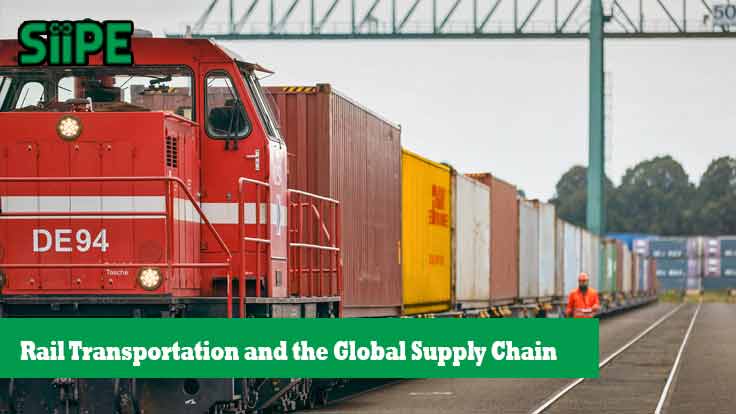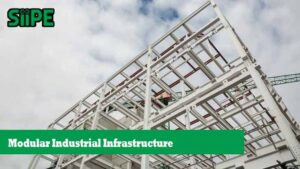When you think of transportation, your mind may jump to airplanes or trucks. But there’s one mode that continues to quietly carry the weight of global trade: rail transportation. This steel-on-steel marvel has been essential for moving people and goods efficiently over long distances — and it’s more relevant today than ever.
In this article, we’ll explore what rail transportation is, how it works, its pros and cons, and its future in the modern world.
What Is Rail Transportation?
Rail transportation refers to the movement of passengers and goods via trains running on fixed tracks, also known as railways. It is one of the oldest and most reliable forms of ground transport, with a history stretching back over 200 years.
Today’s rail systems range from traditional diesel locomotives to modern high-speed electric trains. Railways are operated by both public and private companies, and they serve a wide range of sectors—from bulk cargo to passenger travel.
Key Components of Rail Transport
To better understand rail transportation, let’s break it down into its essential elements:
-
Tracks: The steel rails fixed to wooden or concrete ties form the path for trains.
-
Rolling Stock: This includes locomotives and railway cars, such as freight wagons and passenger coaches.
-
Rail Terminals: These are loading and unloading hubs — similar to airports for trains.
-
Signal and Control Systems: These ensure safety by managing train traffic and preventing collisions.
-
Maintenance Facilities: Used for inspection, repair, and upkeep of rail equipment.
All these components work together to create a coordinated and reliable system.
Advantages of Rail Transportation
Why is rail transport still popular despite competition from road and air? Here are several reasons:
1. High Capacity
Trains can haul a significant amount of goods or passengers in one trip. For example, a single freight train can carry the equivalent of 200 trucks.
2. Energy Efficiency
Rail transport consumes less fuel per ton-kilometer compared to trucks, making it more economical — especially for long hauls.
3. Lower Carbon Emissions
Electric trains, in particular, contribute to reduced greenhouse gas emissions, supporting climate goals.
4. Cost-Effectiveness
Although the initial infrastructure is expensive, operating costs are relatively low in the long term, especially for bulk goods.
5. Safety
Train accidents are rare compared to road traffic incidents, especially in well-maintained systems with proper signaling.
Limitations of Rail Transportation
Despite its benefits, rail transport also has drawbacks:
1. Limited Flexibility
Trains can only travel where tracks are built. This makes rail less adaptable for remote or irregular delivery routes.
2. High Infrastructure Cost
Building and maintaining rail lines, stations, and bridges can be extremely expensive, particularly in mountainous or urban areas.
3. Longer Transit Times
Compared to air transport, trains take longer, especially for cross-border or continental routes.
4. Scheduling Constraints
Unlike trucks that can leave anytime, trains run on fixed schedules, which may delay time-sensitive shipments.
Types of Rail Transportation
Rail transport serves various needs. Below are the main categories:
1. Freight Rail
Used for transporting goods such as coal, oil, automobiles, and containers. Freight rail is crucial for industrial supply chains.
2. Passenger Rail
This includes commuter trains, metro/subway systems, and intercity trains. High-speed trains like Japan’s Shinkansen and France’s TGV fall into this category.
3. Light Rail
Often found in cities, light rail is a mix between buses and trains. It includes trams and streetcars that serve urban passengers.
4. High-Speed Rail
Running at speeds over 250 km/h, high-speed trains are revolutionizing long-distance travel, especially in Asia and Europe.
Rail Transportation Around the World
Let’s take a brief look at how different countries use rail systems:
-
United States: Freight rail dominates, with private companies like Union Pacific and BNSF handling bulk logistics.
-
China: Home to the world’s largest high-speed rail network — over 40,000 kilometers.
-
India: Operates one of the busiest and longest passenger rail networks globally.
-
Germany and France: Known for punctual, efficient intercity and cross-border high-speed trains.
The Role of Rail in Sustainable Development
As cities grow and demand for eco-friendly transport increases, rail becomes central to sustainable infrastructure. Trains reduce congestion, improve air quality, and support compact urban planning.
Governments and developers now consider transit-oriented development (TOD) — building communities centered around rail stations to promote walking, cycling, and train use over private cars.
Innovation in Rail Technology
Modern rail transport is no longer just about tracks and steel. Here are some trends shaping the future:
-
Hydrogen Trains: Emission-free and ideal for non-electrified lines.
-
Maglev Trains: Use magnetic levitation to reduce friction and achieve speeds over 600 km/h.
-
Smart Rail Systems: AI and IoT-enabled networks help monitor safety, optimize routes, and prevent delays.
-
Autonomous Trains: Pilot programs are already underway in Europe and Asia.
Rail vs Other Modes of Transport
| Feature | Rail Transport | Road Transport | Air Transport |
|---|---|---|---|
| Capacity | Very High | Medium | Low (per flight) |
| Cost per KM | Low | Medium | High |
| Speed | Medium to High | Medium | Very High |
| Flexibility | Low | Very High | Low |
| Emissions | Low (especially electric) | High | Very High |
As shown, rail transport excels in capacity and sustainability, though it lacks flexibility.
Future of Rail Transportation
The future is bright for rail, especially as urban areas push for cleaner, faster, and more integrated transport systems.
Expect to see:
-
Expanded high-speed corridors
-
Greater investment in rail infrastructure
-
Integration with last-mile delivery via drones or electric vans
-
International partnerships to standardize rail systems
Rail transportation continues to be a pillar of logistics and sustainable urban planning. Its high capacity, low emissions, and long-term cost efficiency make it a critical part of modern infrastructure.
While it faces challenges in flexibility and infrastructure costs, innovations like hydrogen engines and smart automation are helping overcome those barriers.
Whether it’s moving freight across a continent or commuters across a city, rail transport is not just surviving — it’s evolving.











